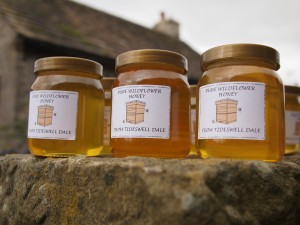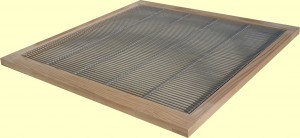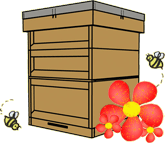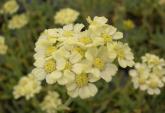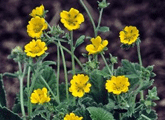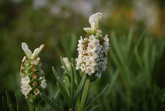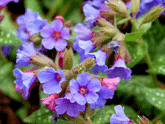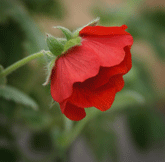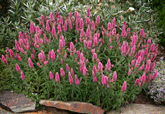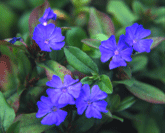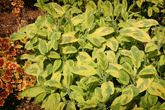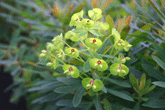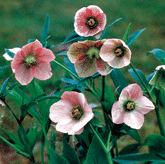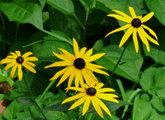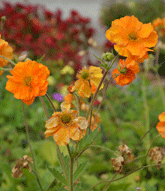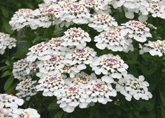Two orders made up today. One 14×12 National with 2 Supers and a Nucleus Hive. None of this is new but we’re proud of making our products out of locally sourced materials and both of these are constructed from Peak District Western Red Cedar.
|
|||||
British National BeehivesBased in a small workshop in Tideswell in the Peak District we make Highest Quality British National Beehives out of 1st grade American Western Red Cedar or High Quality Red Deal according to the British Beekeepers Association (BBKA) Modified National Hive Plans. Everything we sell we make here in the Peak District. We also stock other items of Beekeeping Supplies including Frames, Foundation Wax and Hive Tools. The driving forces behind peak-hives.co.uk are sustainability and quality workmanship. Sustainability because, well it matters quite a bit we think and quality workmanship because customer satisfaction is paramount. Cedar Scarcity.Unfortunately building materials are extremely scarce at the moment and pricing is highly volatile. This goes for Western Red Cedar too. I have decided that until the market settles down I will not be making up any Cedar hives or hive parts. We'll be back in operation once the supply issues have been resolved. Many thanks.webcam...Want to see your National Hive being made? Here's what's going on in the workshop right now. The image is updated every 10 minutes during working hours. Click to see full size...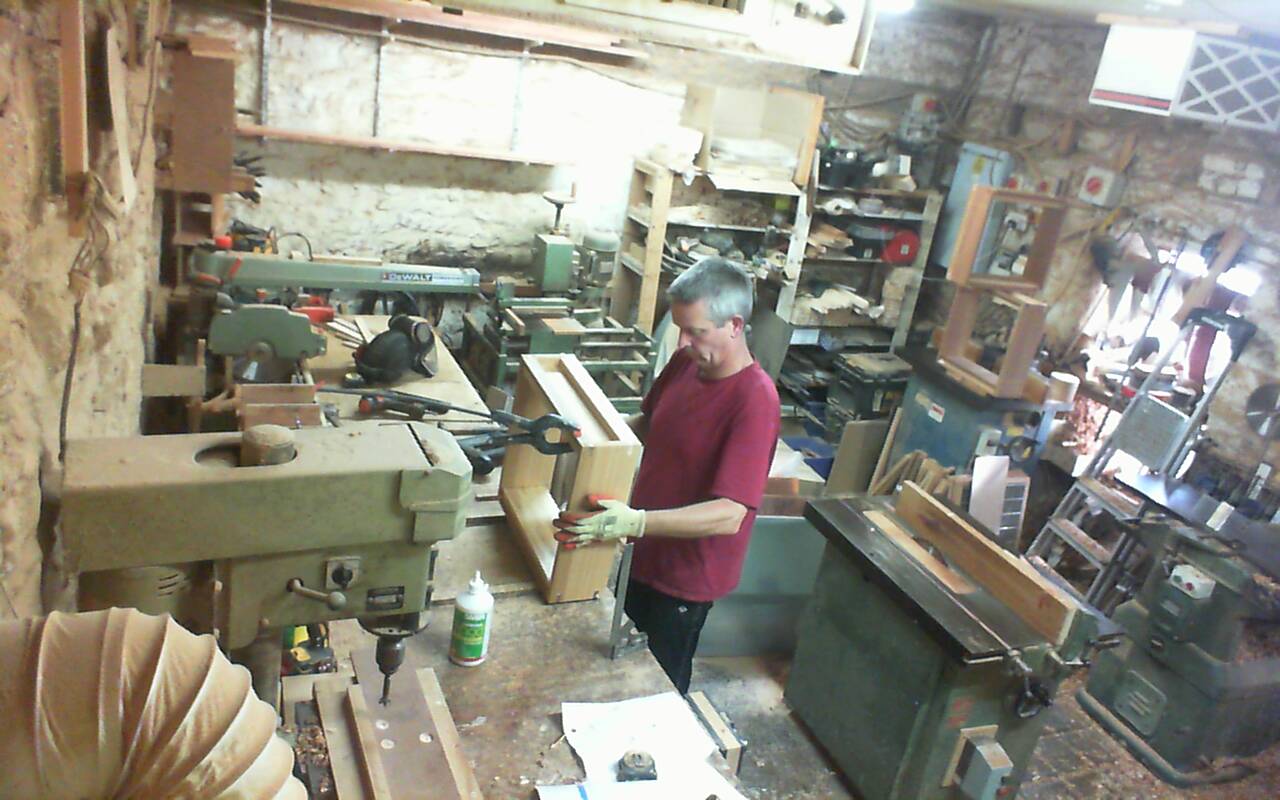 blog...The rest of the centre column is an ongoing blog of what's new at peak-hives.co.uk and other items of interest...veg garden...renewables etc, but please don't let reading about the allotment distract you from placing your order...:-)Here’s a 14×12 top bee space National Hive in Cedar. It’s for an order but I shall also be moving my bees onto 14×12 top bee space in the coming season. I’ve just about managed OK this year with the ‘brood and a half’ I got the bees on but I have to agree with Ted Hooper that a single brood chamber has to be better (easier) to manage and any help in making the transition from beekeeping novice to beekeeper is more than welcome! This hive has been constructed using a mix of bought in and locally sourced Peak District Cedar. With Peak Hives Nucleus Hive Ashforth Feeders. These two will be winging their way to their new owner on Monday…along with the other two orders my slave driving partner Adriana has instructed me to make up this weekend (yes, weekend!). Still, it’s better to have work these days so no grumbling from me! Here’s a shot of the last batch of Peak District Western Red Cedar now ready for machining having spent the summer air drying. I’ll be doing a post in the next few days about converting raw lumber like this into finished National Hive parts ready for our pollinating friends to occupy. I’ve been today to see another local Cedar that has to be felled in the coming weeks to stop it falling on the owner’s conservatory. Better it’s made into National Hives rather than firewood (Cedar is apparently a very poor firewood anyway so I’m informed) I’ve not quite forgotten how to post articles onto the Peak Hives website but it has been a while… There’s more than a couple of reasons why it’s been so quiet on here but one major reason is while we were away on hols the camera got dropped into the sea! Digital cameras and salt water don’t mix it seems and no matter how much drying time I give it it refuses to take another piccy. Took receipt the other day of a new camera and can finally take some shots to put onto the site again…One of the other reason it’s been so quiet is I’m spending as much time as possible in the workshop to make up orders. Off the top of my head this weeks production has included…around 50 flat pack national supers, 25 flat pack national brood boxes, a dozen or so of broods and supers assembled, several Varroa Open Mesh Floors, two standard floors (yes there are still experienced beekeepers who use them), around 14 4″ roofs, 1 complete 14×12 hive in cedar and an accompanying nucleus hive (pictured) and a few ashforth feeders…phew. There’s lots more to make up though and we certainly do thank our customers for their patience. Up here in the Peak the season’s well and truly over as regards the buzzers…they’re settling in for winter. Started with 2 colonies and looks like we’ll end with 2. Now to see how they fair in the Peak District winter… Think I’ll give them a little help with some cut up Kingspan. Holidays 2010!!!! Woohoo!!!! Just finished for the 2 week hols. We’re taking the ankle biters to France camping. Euro Exchange rate could have been kinder but what the hell…this year has been about building up to this so we’re going no matter what. Here’s a quick piccy of a 14 x 12 Nucleus Hive. The customer wanted a stand to suit so endeavouring to please I’ve made one up to the nuc size. The Nucleus was ordered flat pack but as a token compensation for her patience in waiting for the order I decided to build it up and throw in one of the small hive tools and frame lifters too. Must be the holiday season going to me ‘ead… All the best and here’s to bountiful honey crops for all. See you in 2 weeks or so…(and yes I do have work waiting for when we return but I’m going to put it well out of my head for the next fortnight) Nick A quick note before I head for the Cedar…news of some planned product improvements and workflow/customer service. First of all I’m having a branding iron made for Peak Hives. It will allow me to brand all Peak Hives assembled products both inside and out with a unique serial number should the client request it. There’s been quite a few hive thefts in Derbyshire (see latest Beecraft) and as bees and hives come to the fore and increase more and more in value I think putting an indelible unique identifier on each hive is a good idea. The serial number will be the customers ‘PHXXXXXX’ order number which is unique to each customer and it can be burned into the timber as the hive is assembled so I can do it both inside and out in places that would make removal very difficult indeed whilst not affecting detrimentally the look of the hive. Following on from that I’ve decided to implement a calendar widget on the Peak Hives web page where customers can check where their order is in the queue. We are a cottage industry striving for sustainability and mass production isn’t what Peak Hives is about. But we are a business and keeping customers happy is core to any business. The idea is that for every order received there will be a ‘PHXXXXXX’ serial number generated which would be sent to the customer. This would then be placed on a frequently updated calendar visible on the main page. The customer could then easily check where their order was in the queue and have peace of mind as to when it would be finished and despatched. There’s a bit of programming to do on the page so it won’t be done until this current busy period is over but it should be a helpful improvement in future. Finally, I always like to put up some visuals so here’s a piccy of a couple of National Hives that recently left the workshop… The weather’s turned a bit unpleasant here in the Peak and due to my swarm control activities I have a new nucleus colony. I’ve decided to feed them up and made up a pair of Ashforth Feeders, one for a full size National Hive and one for my 5 frame Nucleus Hives. I tried the plastic contact feeders that most of the other suppliers sell and having been warned by experienced beeks that they were rubbish I can confirm from my own experience that they’re right. They are rubbish. I’ve decided to opt for the Ashforth as the best feeder. The other option would be the Miller but according to other beeks they are not as good as they require your hive to be perfectly level (and I know mine aren’t). They are made of First Grade Cedar and have a bee space underneath to allow the bees maximum access to the syrup. The full size feeder can easily accomodate 10 litres of syrup and the nucleus size around 5 litres. I’ll be adding them as Peak Hives products as soon as the broadband arrives at the new house. After dedicating myself to getting up at 5am and finishing in the workshop at 11pm for the last week I’ve finally finished Matthew’s 23 fully assembled Cedar National Hives. That’s 23 National Hive Stands, 23 Varroa Floors, 23 National Brood Boxes, 46 National Supers, 23 Framed and Wired Queen Excluders, 23 Crown Boards with Porter Bee Escapes, 23 National Hive Gabled Roofs and a partridge in a pear tree. Here’s a piccy of Matthew (and Alexandra, one of mine) who runs Honey Bees At Home just about cramming it all in to a long wheel base Mercedes Sprinter Van. Many thanks to Matthew and all the best with Honey Bees At Home! I am well and truly knackered but will be making up orders again tomorrow first thing…it’s a good job I love my workshop. Into the house next to the workshop! Partly due to workloads and also the need for a better place for my own brood we decided to move into the house next to the workshop. Peak Hives customers will be pleased to hear that this allows me to get into work at around 6am and leave around 10pm…has to be done but I’m not sure how long I can keep it up. I’m currently awaiting a broadband connection which is due on the 10th of June. One that’s in then my plan is to install a Peak Hives Workshop Webcam so that clients can see their National Hive being machined and assembled. The move will also allow me to develop new National Hive related products when I have a bit of spare time…watch this space. First on the list is going to be Ashforth feeders for both full sized hives and nucleus hives as my own recent experience suggests that the contact feeders are rubbish. Regional FERA Bee Inspector Tim Roper called round under the FERA free inspection offer (you need to register with Beebase in order to qualify for a free inspection and it’s definitely worth it. My opinion is that it in these times registration should be obligatory. Anyway, after looking at Peak Hives 2 colonies he pronounced them in good health. There was some evidence of chalk brood but not enough to cause too much concern. The bees are now filling up the new super with drawn comb and there’s the ‘old socks’ smell of Dandelion honey. Tim says it’s quite nice to eat though. We’ve now got two strong looking colonies of British Black Bee (Apis Mellifera Mellifera) in the Peak Hives Apiary. On inspection the other day with our experienced beekeeping friend Carl we popped off a cap from a drone cell and there looking up at us was a fat and annoyingly healthy Varroa Destructor mite. Today I decided to start a monitoring process using the slide out trays on our Varroa floors which will be in the hives for the next seven days. When they are removed the mite drop will be counted and action taken if the mite drop is above certain suggested levels (see the Beebase page on Varroa and the very useful Varroa Calculator). I read somewhere about putting oil onto the paper laid on the slide out trays to make sure the little buggers can’t get away or don’t blow away and in the photo you can see the two trays that went into the hives today at 4pm. On the right is just plain white paper and on the left the paper has been liberally coated with sunflower oil. I did wonder if the smell from the oil might cause fright to the bees. Perhaps someone with better knowledge could comment on that. Anyway in they went and now to wait for the results. Tree Surgeon Paul Johnson kindly allowed me to harvest some local Western Red Cedar for making into British National Hives. I’m due to pick up the Cedar from Rowsely Sawmill tomorrow after which it’ll join the Chatsworth Cedar for seasoning. Paul’s son Perry is very keen (and very knowledgeable!) on birds and wanted a dovecote so I decided that it would be easy enough for me to return the favour. Here’s a quick photo of the result. Luckily Perry has found some doves locally and they are now in their garden shed awaiting a new home. All that’s needed now is to put some felt on the roof and paint/stain and the birds can move in. Best of luck Perry! There’s nothing worse than woodworking for leaving you with egg on your face. It happens in even the very best cabinet makers. Just as this standard National Hive floor was about to leave the workshop to be sent out to the customer I decided to lay the tape measure across it and lo and behold it was 8mm short in one dimension! The workshop air didn’t quite turn blue but I did sigh with relief that I wasn’t going to get a call in a couple of days asking why my National Hive floors were different sizes to everyone elses. The only solution was to quickly make up another as the rest of the order was ready for delivery. To err is human. I’m so busy in the workshop making up orders that I’ve not posted anything on the blog for a couple of days so here’s an update on the business…we have van graphics! To celebrate here’s a tiny competition open to all but most likely for those that live in the area and see the new car logo on the road. The first to send in a photo of the newly decorated vehicle (not this one as that would be cheating) will be sent a free hive tool…I did say it was a tiny competition! I’m very pleased with it. Thanks go to Jim and Gary at Hotline Signs in Buxton for a great job done very quickly at a very reasonable price. The Berlingo has already delivered about 20 National Hives, several Nucleus Hives and other National Hive parts to Peak-Hives customers as well as ferried the children on the inevitable school runs. From now on we’ll do it in corporate style! Having retired the family car last year in October and managed (with great difficulty) borrowing my parents car in the meantime I decided it was time to look round for a vehicle that would do the family runs and also help out with delivering National Hive orders in the locality when necessary. By chance we came across a real bargain and here’s the first batch of flat pack and assembled Peak Hives National Hive parts out for delivery this morning. The Berlingo is already a success with the children and it’s a fantastic addition to the business too. The next step is to add a towbar so that I can pick up and move about the locally sourced cedar that Dave and Adele at the National Park authority very kindly send my way when they can. Jim at Hotline signs is doing me some Peak Hives window graphics, can’t wait to see them. I would have liked to have continued living without a vehicle but it’s just not possible where we live. If I did then I’d be giving myself a major headache and putting both family and business under too much strain. I’ve had a few enquiries as to whether Peak Hives will be exhibiting at Stoneleigh. I won’t be able to attend even as a visitor this year as I’m busy with orders and can’t spare the time. Hopefully I’ll get chance to get ahead of the game for 2011 and have a stand next year. To all of you who can get to it this year have a great time! Whilst the locally sourced timber is sticked and stacked in the now nice and dry spring weather I’ve been conducting a little experiment in timber drying. I cut a piece of the Chatsworth Cedar to the dimensions of a National Hive top or bottom rail and I’ve been taking photos of how it’s gone on weight wise inside a centrally heated house…the difference is dramatic to say the least. From a whopping 372 grammes and feeling like a truncheon it’s now a mere 145 grammes and feeling like a piece of balsa wood. It’s incredibly light. Part of the reason why hives are made out of cedar is that it’s light but the reason why it’s light is because there are lots of air pockets in the timber which gives it another potentially useful property. It’s a good insulator. Nice warm bees in nice light and comfy cedar hives… Every now and again I go to the lumber stack and ‘heft’ a piece of the Chatsworth cedar and I can feel it getting lighter in weight almost day by day. Hi. Answering a few queries I’ve had about fitting metalwork to National Hive Brood Boxes and Supers here’s a quick and simple guide to correctly fitting metal rails to the woodwork. The image is more or less self explanatory but the essence of the procedure is to turn the brood/super upside down and place some sized bits of timber (10mm for bottom bee space and 18mm for top bee space) under the metal runner to give the correct gap. The metal runner just rests on top of the wooden spacers while you pin it into place. Once done you are guaranteed the correct chosen bee space. Time to squeeze in an allotment update… Spring is finally here in the Peak District so here’s a photo (panorama of four photos stitched together) of where I’m currently up to. Lots of red onions because my partner Adriana is from Peru and they’re used widely in Peruvian cooking. A new area for soft fruit (Blackcurrants, more Rhubarb, Autumn and Summer Raspberries, Redcurrants, various varieties of Gooseberries and more…) replacing a nettle patch that discouraged the family from venturing down to do some weeding/fettling. Prior to this year the plot had been one area with treaded down paths every 4 feet or so and nettles all round. I was given some weatherproof boards back end of last year and slowly started making up the raised beds in the picture. On the far right there’s one high raised bed which will be followed by three more of which two will be given to the kids to grow what they will and two will be used for root veg or spuds. The panorama is perhaps a future bees eye view as I’ve taken the photos from where I’m planning on putting my two Apis Mellifera Mellifera colonies that I have coming in a few weeks. With the order book so full I decided to work through the Easter weekend. By Monday I had a stack of Red Deal National Supers reaching up to the rafters of the workshop! Completely cleaned me out of Red Deal. There’s more being delivered on Thursday and luckily I’ve a good stack of cedar to work on in the meantime. It’s a good thing that Andy came up with a transit van to pick up at lunchtime today otherwise I’d have struggled for room in the workshop. Once he’d taken away this large order I managed to squeeze out a couple of Nucleus Hives by close of play. Phew! Friday is holiday! My boy James is doing very well at school and as a reward the lot of us are off to Alton Towers Water Park. I suspect that Saturday may bring more workshop time for this blogger but I’m going to allow myself a little R and R and enjoy Friday! Well I wouldn’t call it the big time but a Peak Hives National Hive has had a minor appearance on telly. Matthew Austin from Honey Bees At Home called me and was keen on using Peak Hives Nationals for his London based business managing beehives in the gardens of the capital city. He came up on Sunday and picked up a standard National Hive in Western Red Cedar with a gabled roof. The next day it was on the Alan Titchmarsh show in this brief slot… [youtube]http://www.youtube.com/watch?v=8cA6WpVibIE[/youtube] Had a busy and tiring day felling two Western Red Cedar trees with tree surgeons Paul and Dan. The trees had to come down anyway as they were about to topple the chimney stack on the house they were next to. Once they were down I sliced them into National Hive sized logs and then as soon as possible it’s down to Simon at Rowsley Sawmill where they’ll be milled into 2″ boards ready for air drying this summer. Here at Peak Hives we’re very keen to obtain locally sourced materials if at all possible and many thanks to Dave for giving the heads up on the trees and to Paul and Dan for letting me come along on the day. Can’t wait to get one of Peak Hives National Beehives made up out of Peak District Cedar. Local tree surgeon Paul has contacted me with regard to a couple of Western Red Cedars that he has to fell. They need to come down anyway as they are threatening the buildings nearby. He’s been very helpful and positive about these trees being used for National Hives rather than just burning them as firewood and is in negotiation with the owners now to see if it’s possible to do a deal on their unwanted trees. Many thanks to Paul! Peak Hives are now producing framed and wired queen excluders suitable for National Hives with either top or bottom bee space. Our metalwork supplier sent us the metal grills a few weeks back and I’ve just had the chance to set up the workshop jigs to produce high quality frames to go round the excluder grill. As with all our other National Hive seperates they can be found in the hive parts section in the left hand column. I’ll also add them as an option on purchasing a complete hive this evening. My metalwork supplier has recently sent me a batch of high quality queen excluder grills. The mission before me (…’should I choose to take it’. R.I.P. a fond childhood memory – Peter Graves) was to come up with a frame suitable for both top and bottom bee space. To tell the truth they’ve been sitting on the shelf for a couple of weeks now irritating the hell out of me that an obvious solution wasn’t immediately at hand. The National Hive order that I’m currently working on includes a couple of excluders so in the end I bit the bullet and spent a couple of dead (£££) hours ‘uhmming and aahing’ and making up various workshop jigs. By five o’clock PM with the help of the new Startrite Pillar Drill I’d got this far… By six I’d cracked it and I’ll make up the two for the order in the morning and tomorrow evening have them on the site as a Peak Hives product. Happy beekeeping 2010. Nick These four flat pack cedar national nucleus hives were custom made to the client’s preferred dimensions. Took a little longer than usual as I had to order special meshes for the varroa floors but they’ll be packaged and sent today and I’m sure the customer will be satisfied as will their bees… Hi. I’m always on the lookout for new machines and I came across this Startrite Mercury Pillar Drill. There’s not much to be done with one of these for making National Hives but seeing as I had been coping with a much inferior machine bought from B&Q or a.n.other vendor of rubbish machinery I jumped at the chance. The new machine is 3 phase and very good at what it’s supposed to do…the old is single phase and rubbish…easy to see which is the better machine. In our endeavour to provide everything for the National Hive I’m pleased to say that we’ve found a local producer of National Hive Tools. Made in Sheffield. They are now listed in the left hand column for purchase. Here’s a picture. Click on the pic to see it in higher resolution. Hi. Dave and Adele at the Peak Park have come up with another Western Red Cedar that is about to be felled. More locally sourced timber for National Hives! I’m very pleased and would like to thank both Dave and Adele for their support for the cottage industry that is Peak Hives. The tree is due to be felled anyway as it’s leaning a bit too close to it’s owner’s conservatory. My opinion is that it’s better used as timber for National Hives than put through one of those awful chipper machines and ending up as garden mulch. I’ll have to arrange milling again into 2″ boards with Simon at Rowsley Sawmill and then it can join the Cedar from Chatsworth that is already sticked and seasoning. It’s not really economically sensible to do this as the time and effort it takes is enormous but there’s definitely a satisfaction in knowing that the timber I’m working came from just down the road rather than the other side of the world. Here’s a pic. Here’s a couple of National Nucleus Hives I’ve finished today. On the left a flat pack National Nuc in Red Deal with a standard floor. On the right a fully assembled Cedar National Nuc with Varroa Floor (with slide out tray). Both take 5 Hoffman DN4 frames with an extra 8mm manipulation space. The first batch of locally sourced Chatsworth Western Red Cedar has been milled up by Simon at Rowsley Sawmill and I’ve just stacked and ‘sticked’ it to air dry. Simon’s milled it into 2″ waney edge boards which I can then machine up into either national hive rails or slice down the middle for hive ends/sides. Kiln drying would be too expensive so we’ll stick it cover it to protect it from the rain and wait… I’ve had quite a few requests to produce top bee space national hives. Got an order finished this morning so just before my lunchbreak I decided to ‘jig up’ for offering top bee space nationals. Basically the difference in machining requires the production of a deeper top rail for supers and brood boxes and a suitable mortice in the brood/super sides to accommodate the deeper rails. Anyway to cut a not very long story shorter here’s a couple of pics showing the standard British National Hive option of bottom bee space and the new optional top bee space… I’ve also put together a little page on the debate between top and bottom bee space…here I’ll update the site to allow choosing top bee space as an option later tonight. Hi. Rich came up on Wednesday to the Peak Hives workshop and picked up his flat packed national hives. Was good to see him again and Steve who came along too. Rich is an experienced beekeeper so by agreement (and the fact that they wouldn’t fit into his car otherwise) I didn’t seperate them out into individual units. Here’s the kit he took… I’m getting plenty of enquiries about making up batches of frames and will endeavour to have a go this weekend (I do have to make a special meal for the oldies though on Saturday as it’s their golden wedding anniversary). The other thing that I need to respond to is enquiries about ‘top bee space’ national hives. It’s technically sorted but I want to have a go at machining some up before offering it as an option. Coming soon, probably tomorrow. Allotment news is that I made some space this afternoon for another fruit tree in the garden…it’s getting tight on space and I’ve another two trees to plant. I wonder if the farmer who owns the field across the road would mind. All the best and as usual, happy beekeeping 2010! A quick post to show a detailed view of our lock joints on a standard national hive roof. Originally I was using a dovetail jig but thought it was worth while investing in the required tooling to make the roofs as per the specification laid down by the British Beekeepers Association Modified National Hive plans which are the mainstay of all Peak Hives products. I’m hoping to find some time in the next couple of weeks to make up a few observation hives…those dratted orders keep getting in the way though. Happy beekeeping 2010! Now that the big freeze is over (at least for the moment it looks that way) we’re back in production. Here’s a British National Hive with 2 Supers in Red Deal. Here’s to a successful beekeeping 2010. I’m long overdue to start frame making and I’m compiling a list of potential customers for DN4, SN1 etc. Hopefully I’ll be able to get that thin kerf blade in use soon… Allotment news is that I’ve just planted 2 out of 6 trees supplied by Rogers of Pickering. 1 Bramleys Seedling and 1 Spartan apple (recommended by Carl with thanks). I’ve a couple of pear trees to plant next (Buerre Hardy and Conference) and 20 odd raspberry canes along with some plum trees and gooseberry bushes. When we moved here as a family in the early 60s all these things were here and producing fruit. Somehow they’ve been left to grow old and wither…(I blame the supermarkets..grrr). With some luck and cultivation we’ll be back to picking our own fruit in a couple of seasons… Phew. Now that the worst of the big freeze appears to be over I can start working away in the workshop again…Next winter I’ll have dry lined it with kingspan insulation (if the temp goes below 5 deg C then glues don’t set which as things stand pretty much closes the workshop down!!!). Apart from the difficulties that the extreme weather has caused work wise it’s been hard enough just keeping warm at home…Managed thanks to the Husqvarna and a beautiful Jotul 602N. Best thing my Dad ever bought!!! Any road up…here’s a couple of Open Mesh Floors…One for a full size British National Hive and one for a National Nucleus Hive…One in Cedar and the other in Red Deal… I do find the Nuc one cute…there again I need to get out more… Btw, the jury’s still out for me on the OMF versus Standard Floor… As requested here are the assembly instructions for Peak Hives flat pack National Hive Stand… Happy new year to all Peak Hives customers!!! For new beekeepers (and there’s plenty, including me) I thought it might be worth while suggesting what I would think of buying as a first apiary set up. If you’re good with a hammer, nails, glue, flat surface and *JOINERS SQUARE* then: 2 x Flat Pack of the default national hive configuration you see when you load up this page. Add on a crown board and choose which type of metalwork you require for the brood box and supers (I’d recommend metal runners throughout and then use frame spacers to start off with – this can be changed over later to castellated spacers for the super easily enough should you wish) And then choose which floor you want. Most go for the Varroa Floor with slide out tray but many experienced beekeepers go for a standard floor. Then timber. Cedar is good for two reasons…1. it’s light. A national super full of honey is already heavy enough. 2. Cedar is naturally resistant to rot. Red Deal on the other hand is notably cheaper and will make a robust hive (provided you take care of it, which is easily done. There’s plenty of houses round here built in the victorian era with original Red Deal doors because they’ve been well maintained). That recommendation is to go with 1 nucleus colony. The nucleus goes into hive number 1 and then when (possibly) a month later it swarms you have hive number 2 in which to put the swarm. It’s said that it’s easier to manage two hives than 1. And safer too. 1 Hive + 1 Disaster = No Bees! Of course if you’re not entirely confident about your assembly skills then perhaps choose the same set up but pre-assembled here at Peak Hives. Assembling a hive when you’ve done it lots of times is one thing but doing it for the first time can be a bit daunting. Happy beekeeping 2010! Nick Hi. I thought it might be informative to show the workshop (or the ground floor machining area at least). This is where all our national hives are made. Upstairs there’s an assembly area and shelving for hive parts. As you can see it’s an old building which in it’s time has been a cow shed, a hen shed, a joiner’s workshop, an electricians workshop (The whole of Tideswell was electrified from here), an artists studio, a joiner’s workshop again and now peak-hives. The image is several shots stitched together using ‘hugin’. All the best and happy beekeeping for 2010! I’ve just updated the prices/availability regarding the National Hive Gabled Roofs reflecting the fact that we’ve decided not to do them any more in flat pack. The reason is that the roof structure with the top finishing piece is, I think, a weakness (given that its the most exposed part of a hive) and it’s better to have a single one-piece metal roof cover which, thanks to Swift Engineering of Buxton, we can now provide. It means it’s not feasible to send them out as flat pack as the metalwork will get spoiled in transit. We want you to get the best use out of our products for many seasons and this decision was made to ensure that’s the case. My own view is that for practical beekeeping the flat roof might be the better solution as you can turn it upside down and put supers on it etc but I understand the desire for the aesthetics that the gabled roof provides. Feedback, as always, is very welcome. All the best. Nick As a quick break from making up a batch of national nucleus hives today I had the chance to test out my new gear for making lock joints for national roofs. previously I’d been using dovetails (which are perfectly suitable and in my opinion in some ways better) but given that all the big boys use lock joints I felt it necessary to follow suit and so here’s the test pic on a couple of bits of scrap western red cedar… Assembly Instructions for Peak-Hives Flat Pack National Hive Gabled Roof …here I’m getting too busy now to do a listing every Sunday and Wednesday so it’ll just be Sunday from now on. At least for the time being anyway. Another listing for a national hive super on ebay….here Arrived today. One pricey blade! A quick break from making up orders and stock to perform a test with the new blade. Cuts like a dream. Finishes as if it’s been through a planer. The cut width is a tiny 1.7mm!! This will certainly do the trick of getting the maximum number of National Hive frames out of the timber used. I’ll be making up a batch of frames next week probably starting with DN4 Hoffman’s to be supplied with our brood boxes or sold as flat packs. Not sure how M and T are doing but we’re snowed under with orders. Initially I was working on a just in time ordering system. That’s been binned as I can see that if I don’t have stocked shelves of National Hive parts then I won’t be able to cope. So every order that comes in now is being made up but doubled…one for the customer and one for the shelves… I’m also fretting about delivery times…Adriana is taking charge of running the business as regards that so I shouldn’t be so concerned given that she’s a background in managing businesses very sucessfully… worries gone? not quite but almost… Cheers and here’s to a good beekeeping 2010! Nick We’ve just purchased some tooling to improve upon our National Hive Roof design. Now roofs will be constructed using 1/2″ lock joints. Frames wise I decided that it was worth investing in a thin kerf saw blade for our table saw. Each cut will only waste 1.7mm instead of the usual 3.2mm. When machining up lots and lots of little parts (ie. frame bits) it will be much more economical if each rip through the timber only consumes 1.7mm….that’s the theory anyway and it’s backed up by me getting the plastic out to pay for an expensive saw blade… We hope your bees will be happy in our hives and would welcome feedback in the new season…photos or comments please and we’ll set up a gallery area on the site. All the best Nick Wednesday listing…here |
|||||




